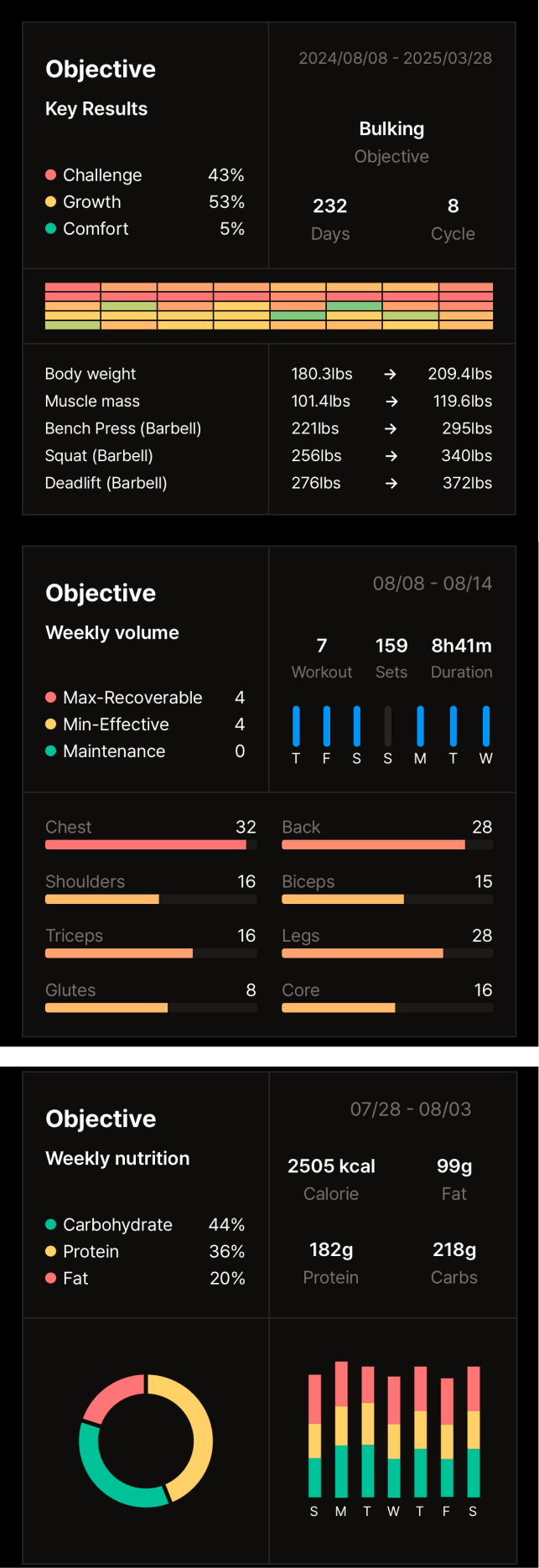What Is Bulking? (Clean vs. Dirty Bulk)
Understanding Bulking
What is Bulking?
Bulking is a strategic period in a fitness regimen focused on gaining muscle mass. It involves consuming a calorie surplus, meaning you eat more calories than your body burns daily. This surplus provides the necessary energy and building blocks for muscle growth and repair. Bulking is often cycled with cutting, a phase focused on reducing body fat while maintaining muscle mass.
The Science Behind Muscle Gain
Muscle growth, also known as muscle hypertrophy, occurs when muscle fibers are damaged through exercise and then repaired and rebuilt stronger. Nutrition plays a vital role in this process. Consuming sufficient protein provides the amino acids needed for muscle repair, while carbohydrates replenish energy stores and support hormonal function. A balanced intake of macronutrients—proteins, carbohydrates, and fats—is crucial for effective bulking. ## Clean Bulking: A Focused Approach
What is Clean Bulking?
Clean bulking emphasizes gaining muscle mass through a structured diet and exercise plan. It prioritizes nutrient-dense foods and minimizes processed foods, sugary drinks, and unhealthy fats. While weight gain is still the goal, the focus is on maximizing muscle growth while minimizing fat gain. This approach promotes overall health and well-being while supporting sustainable muscle development.
How to Start a Clean Bulk Diet
Planning a clean bulk diet involves calculating your daily calorie needs and then adding a moderate surplus, typically 250-500 calories. Focus on consuming lean protein sources like chicken, fish, and legumes. Incorporate complex carbohydrates such as brown rice, quinoa, and sweet potatoes. Healthy fats from sources like avocados, nuts, and olive oil are also essential. ### Clean Bulking Workout Routine for Beginners
A beginner's clean bulking workout routine should incorporate compound exercises that work multiple muscle groups, such as squats, deadlifts, bench presses, and overhead presses. These exercises stimulate significant muscle growth. Incorporate two to three strength training sessions per week, allowing for adequate rest and recovery between workouts. Including cardiovascular exercise one to two times per week helps maintain cardiovascular health and manage body fat.
Dirty Bulking: The Pros and Cons
What is Dirty Bulking?
Dirty bulking prioritizes rapid weight gain by consuming a large calorie surplus, often from any available food source. This approach may include highly processed foods, fast food, and sugary drinks. While muscle mass increases quickly, so does body fat.
Benefits and Risks of Dirty Bulking for Muscle Growth
Dirty bulking can lead to faster initial muscle gains due to the high calorie intake. However, the significant increase in body fat can have negative health consequences, including increased risk of cardiovascular disease and metabolic syndrome. It can also make the subsequent cutting phase more challenging.
Clean vs. Dirty Bulking: Making the Right Choice
Comparison Chart: Clean vs. Dirty Bulking
| Feature | Clean Bulking | Dirty Bulking | |---|---|---| | Calorie Surplus | Moderate (250-500 calories) | High (500+ calories) | | Food Choices | Nutrient-dense, whole foods | Any food, including processed options | | Muscle Gain | Gradual, sustainable | Rapid, but with significant fat gain | | Health Impact | Positive, supports overall health | Potential negative impacts due to high fat intake |
Safe Bulking Strategies for Weightlifters
Regardless of your chosen bulking strategy, prioritize health. Monitor your progress regularly, adjusting your calorie intake and workout routine as needed. Consult with a healthcare professional or registered dietitian for personalized guidance.
Practical Tips for Effective Bulking
How to Calculate Calorie Needs for Bulking
To determine your calorie needs, use an online calorie calculator or consult a registered dietitian. This calculation considers factors like age, sex, activity level, and current weight. Add a surplus of 250-500 calories for clean bulking or a higher surplus for dirty bulking (though this is not recommended). Track your calorie intake and weight gain to ensure you're on track.
Nutrition Tips for Effective Clean Bulking Results
Prioritize whole, unprocessed foods. Distribute your protein intake throughout the day to optimize muscle protein synthesis. Consume carbohydrates around your workouts to fuel your training and replenish glycogen stores. Don't neglect healthy fats, which are essential for hormone production and overall health. ### Bulking Meal Plan for High-Intensity Training
A sample meal plan for high-intensity training might include:
- Breakfast: Oatmeal with protein powder and berries
- Lunch: Chicken breast with brown rice and vegetables
- Snack: Greek yogurt with almonds
- Dinner: Salmon with sweet potato and asparagus
- Post-Workout: Protein shake with banana
This is just a sample; adjust portion sizes and food choices based on your individual needs and preferences.
Conclusion
Both clean and dirty bulking aim to increase muscle mass, but they differ significantly in their approach and long-term effects. Clean bulking prioritizes sustainable muscle growth and overall health through a balanced diet and structured exercise plan. Dirty bulking, while potentially faster, carries health risks and can lead to excessive fat gain. Choose a bulking strategy that aligns with your fitness goals and health considerations. Exploring further resources on bulking and cutting cycles can provide additional insights.

